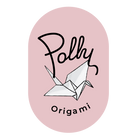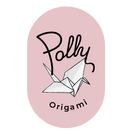A Comprehensive Guide to Origami Paper for Modular Projects
This guide covers the selection of origami paper, tools, and techniques for creating complex modular origami models.
Modular origami involves creating complex models by assembling multiple simple units or modules, each made from a piece of origami paper. This technique allows for the construction of intricate and large-scale structures.
Choosing the Right Origami Paper
When it comes to origami, the choice of paper is crucial for the success and aesthetic appeal of your model. Here are some key factors to consider:
Material and Thickness
Thicker papers are often preferred because they provide more stability and durability to the final structure. However, the thickness of the paper depends on the complexity and type of the model you are making. For instance, models that require wet folding or need to be stable and durable benefit from thicker papers, such as watercolor paper or elephant hide, which can range from 160 to 300 grams per square meter (gsm).
On the other hand, more complex models with intricate details, like insects or models with many layers, require thinner papers. Papers like kami, tant, or even tissue paper, which are typically around 60-80 gsm, are ideal for these types of models because they are easier to fold and can handle multiple creases without tearing.
Color and Pattern
Origami paper comes in a variety of colors and patterns, which can significantly enhance the visual appeal of your model. Duo paper, for example, is particularly useful for designs that require showing different colors in specific patterns. This type of paper has different colors on each side, allowing for creative and visually appealing designs.
Tools and Techniques
Scoring Tools
Tools like nail dotting tools or clay modeling tools are essential for achieving precise folds. These tools help in creating sharp creases and can be particularly useful for models that require very precise folding, such as complex insects or detailed designs.
Folding Techniques
Techniques such as pre-scoring the paper, using templates for curved folds, and ensuring precise alignment of folds are critical for successful origami. Pre-scoring can help in achieving sharp, clean folds, while templates can assist in creating uniform curved shapes. Ensuring that your folds are precisely aligned is key to maintaining the structural integrity and aesthetic of your model.
Types of Modular Origami Units
Simple Units
Units like the Sonobe module are fundamental in modular origami. These simple units are easy to fold and can be combined to create a variety of models. They are a great starting point for beginners and are versatile enough to be used in more complex designs as well.
Advanced Units
More intricate units, such as the triangle edge unit or the umbrella module, can be used to create detailed and robust models. These units require more advanced folding techniques but offer greater flexibility and complexity in the final structure. They are ideal for experienced folders looking to create more sophisticated designs.
Assembly and Construction
Connecting Modules
The assembly of modular origami involves inserting the tabs of one module into the pockets of another. This process requires precision to ensure that the modules fit together correctly and the structure remains stable. It is important to follow the instructions carefully and make sure each module is folded accurately before assembling them.
Large-Scale Structures
Using modular origami principles, it is possible to create large-scale structures that are adaptable and reusable. These structures can be disassembled and reassembled multiple times without damaging the individual modules, making them highly versatile and practical.
Tips and Best Practices
Precision and Patience
Modular origami requires precision in folding and assembling the units. It is crucial to take your time and ensure that each fold is accurate and sharp. Patience is key, especially when working with more complex models or large-scale structures.
Reusability and Repair
One of the advantages of modular origami is the reusability and repairability of the structures. If a module is damaged, it can be replaced without affecting the entire model. This feature makes modular origami a sustainable and enjoyable hobby, as you can continually modify and improve your creations.
Conclusion
Origami paper for modular projects is a versatile and creative medium that allows for the construction of complex and beautiful structures.










